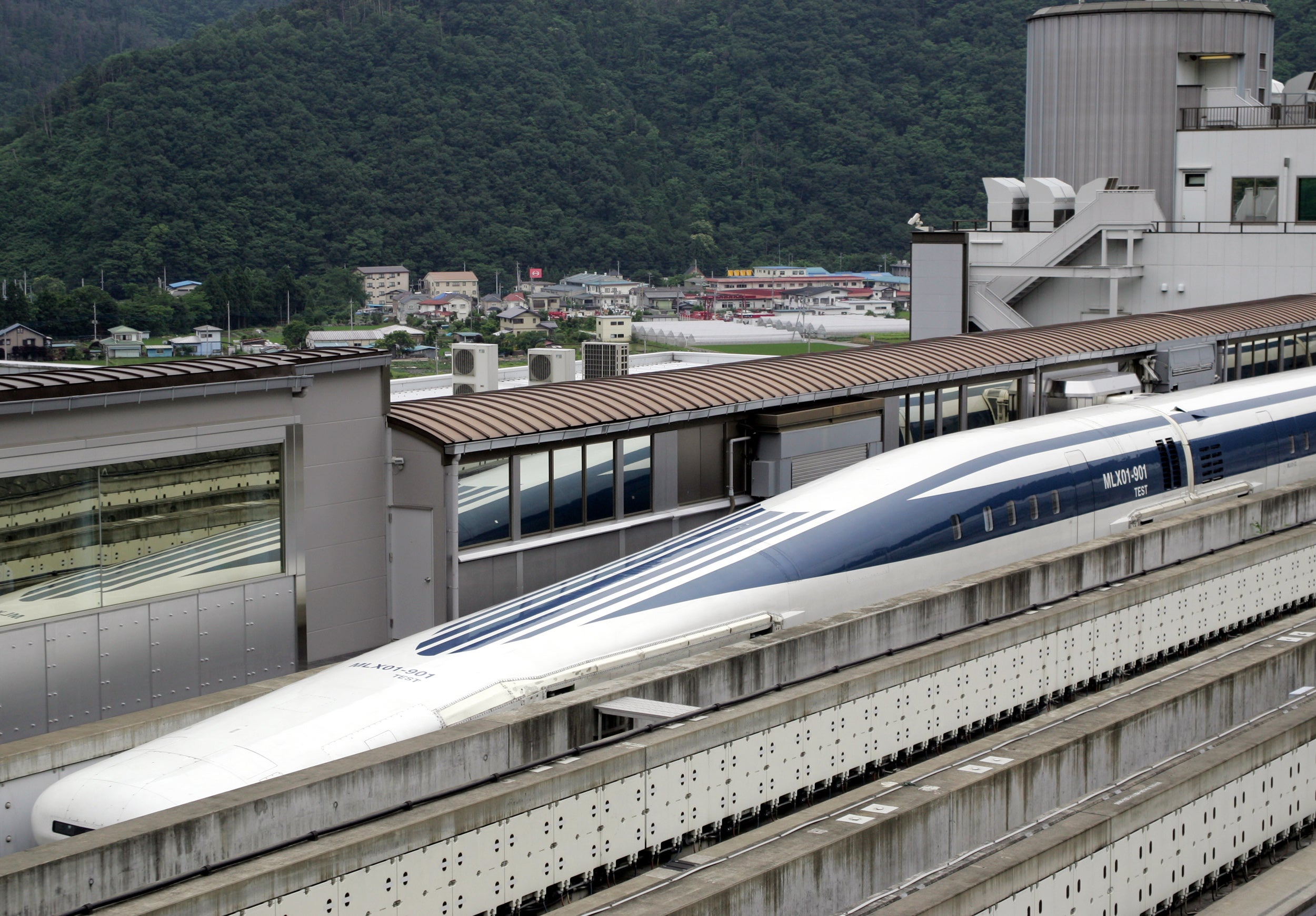Japanese 311mph maglev bullet train tested successfully
New train uses magnetic levitation to achieve top speeds

The first successful tests have been carried out for Japan’s new generation of L0 trains, maglev bullet trains designed to travel at speeds of 311mph.
The trains are currently on schedule to be deployed on the Tokyo-Nagoya line in 2027, with the first five cars (including the aerodynamic long ‘nose’ on the front carriage) displayed on a test track in Yamanashi Prefecture.
The new trains use magnetic levitation (maglev) technology in place of wheels, allowing for much smoother moment than traditional wheeled systems. The lack of friction means acceleration and deceleration are faster and they are unaffected by weather conditions.
The first commercial maglev service was opened by China in 2004. The Shanghai maglev can travel at speeds up to 264mph through the average is closer to 150mph. Still, this compares favourably to the UK where 125mph is closer to the average train speed.
The new train has been designed by the Central Japan Railway Co (JR Tokai) and will consist of 16 carriages, carrying up to 1,000 passengers at a time. The new train will cut the current travel time for the by more than half, from 90 to 40 minutes.
Japan’s reputation for high-speed rail started in 1964 with the unveiling of its first bullet train coinciding with the Summer Olympics. The central line in Japan – the Tokaido Shinkansen – is the world’s busiest high-speed rail, carrying 151 million passengers each year.
Subscribe to Independent Premium to bookmark this article
Want to bookmark your favourite articles and stories to read or reference later? Start your Independent Premium subscription today.

Join our commenting forum
Join thought-provoking conversations, follow other Independent readers and see their replies